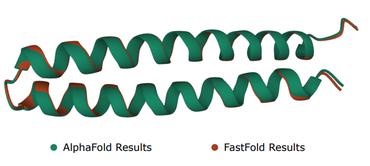Generating Tertiary Protein Structures via an Interpretative Variational Autoencoder
Much scientific enquiry across disciplines is founded upon a mechanistic treatment of dynamic systems that ties form to function. A highly visible instance of this is in molecular biology, where an important goal is to determine functionally-relevant forms/structures that a protein molecule employs to interact with molecular partners in the living cell. This goal is typically pursued under the umbrella of stochastic optimization with algorithms that optimize a scoring function. Research repeatedly shows that current scoring function, though steadily improving, correlate weakly with molecular activity. Inspired by recent momentum in generative deep learning, this paper proposes and evaluates an alternative approach to generating functionally-relevant three-dimensional structures of a protein. Though typically deep generative models struggle with highly-structured data, the work presented here circumvents this challenge via graph-generative models. A comprehensive evaluation of several deep architectures shows the promise of generative models in directly revealing the latent space for sampling novel tertiary structures, as well as in highlighting axes/factors that carry structural meaning and open the black box often associated with deep models. The work presented here is a first step towards interpretative, deep generative models becoming viable and informative complementary approaches to protein structure prediction.
PDF Abstract

